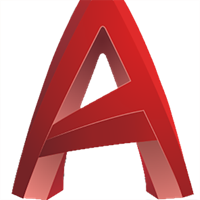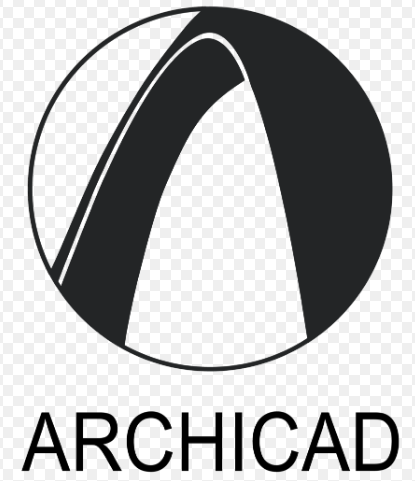What Programs Architects Should Learn
A short guide to some key software in the architectural and design spaces and the jobs they do within different phases of a project.
Introduction
An Architect or designer no longer sits at his drawing board but in front of a computer using a host of programs to produce design and production information. My professional life so far has spanned between the digital and analog world. I learned AutoCAD R12 when I was still a student but coming into practice offices mostly were still operating somewhere between the drawing board and the computer.
In my first office out of Architecture school one side of the room was workstations and the other drawing boards. That didn’t last long though and now the question is not whether you are using CAD but whether you are using BIM.
This post is for the student looking out on the Architectural software landscape for the first time. Where to head to and how to navigate and how to avoid some common traps.
Student or Professional
As a Student and then hopefully later a professional architect or designer you need to bring all your skills to bear on the project you are working on. You need to acquire knowledge of the practice of architecture or design and you need to acquire the knowledge for the use of the tools with which you deploy that knowledge.
In other words the programs on your computer are just the tools by which you practice Architecture. They are a means to an end and the best practice is to be able to use them to do what you need and be able to change them if a better tool comes along. It usually pays to be quick to try a new program but slow in integrating and trusting it.
That being said it’s important to know what tool fits for what job. I have tried instead of recommending some program for some certain job to rather map an Architects requirements onto a a couple of different situations so as to help you find the tool you need at the right time.
Software Only Part of The Story
An Architects key skills will be always revolve closely around visualising your ideas, or sketching. Pen and pencil on paper or electronically on a tablet. If you can describe your ideas with a sketch you have a key skill which will provide the cornerstone of your skillset you will hopefully grow.
Quick Advice Upfront
Note: These are just my thoughts based on my experience which is time, location and job specific. I hope these thoughts can feed into your decision process but these aren’t prescriptions for you to follow.
Students starting from nothing should probably start with Sketchup, Photoshop, Illustrator, Indesign, A BIM program, 2d Drafting. If you have been accepted into an Architecture school you should at least be a little familiar with a couple of these.
Interns and newly qualified Architects expand out from your core skills, more focus will naturally lean into BIM and production information outside of school. See what the office is working with and learn it then look to see if they are missing a trick somewhere with their software implementation.
As a designer you should collect for yourself a toolbox which contains all the tools you need to get your work done. A carpenter for instance would start with a basic set of tools but would always be on the lookout for a better or more specialised tool to help him. So with the designers software toolbox and skillset. You should start out acquiring the basic and key abilities in the programs that cover your requirements but be always on the lookout for something more effective or with a different set of abilities.
Specialised Generalist
Become a specialised generalist with design software. Don’t concentrate on just one platform or type of program. You should learn to combine more than one. Software is a tool for you to communicate your ideas effectively. Try many tools out and see what fits. Try combinations of tools and maybe you can get a competitive advantage.
Where to Use What Programs
The Architect shepherds a building from its inception to a finished product. That means it goes several different phases of work and different software tends to get used in those different phases.
In the UK RIBS sets out 8 stages of work;
- Strategic Definition.
- Preparation and Brief.
- Concept Design.
- Developed Design.
- Technical Design.
- Construction.
- Handover and Close Out.
- In use.
The design process is absolutely not this linear but the phases of a project are. There is even a more simple way of breaking them down.
- Programming.
- Schematic Design.
- Design Development.
- Construction Documents.
This gives at least an outline of the way a design progresses. Each stage builds off the earlier ones and additional and more detailed information is required as the stages are worked through. The earlier phases are more graphics heavy (sketches, drafting, graphics, visualisation) and the later phases more technically heavy (drafting and BIM).
A more detailed look at the design process is for another time but this serves to give you an idea that the correct program will change with the phase of the project and the intention of the information you are producing so it’s worth bearing this in mind.
A student will want to concentrate on the more graphic heavy and earlier design focussed programs however coming into an office environment for the first time often means adjusting to the later stages of work probably more BIM heavy.
What Software
Unlike most other professions architects and designers communicate primarily through drawings, 2d and 3d, colored and black and white. We need to write too, specifications etc but knowing word and excel fairly well should be universal by now.
So breaking up Architecture Programs into four rough categories
- Drafting Programs (2 or 3d drawing programs) from presenting concept design all the way through to production information.
- Graphics Programs (programs to manipulate images, photos, presentations etc). Mainly with presentations.
- Visualisation Programs (3d and rendering programs for photorealistic views) Mainly presentations visualisations.
- BIM Programs (Building Information modelling) Mainly production information as they are less flexible but more specialised tools.
Drafting Programs
For drawing only mostly for design and production stages or for the beginning of a project in an Office.
So at the beginning of a project you want to sketch out different ideas and thoughts quickly and be flexible in not pinning down your ideas too early. So looser, quicker more interpretative way of working is key here. Your hand sketching is key here and a key Architectural skill which you should practice and always work at.

But for software on the computer Sketchup might be best suited here. You can convert anything quickly to 3d and easily manipulate a model in three dimensions and play around with it. You won’t find that visual flexibility and responsiveness in BIM or 2d drawing programs.
2d Drafting / CAD

Vectorworks is here because it can do 2d Drafting but it can handle sketching up to BIM but traditionally it has been a drafting program. I have never used it but it is strong in some European countries.
You NEED to know one CAD program. Yes it’s yesterdays technology and BIM is replacing it but it’s still a bread and butter program. Design consultants still use it, or if they don’t they can export to .dwg. Architects offices still use it, for smaller projects, or for detailing on otherwise BIM projects. Often in my experience a BIM project gets modelled mostly up to an (LOD) (Level of Development) of 300 which is up to the point of detailing, often projects are detailed beyond this in AutoCAD. As BIM is more and more widely taken up this will be phased out. Already there are a few people coming through in the office that are much more comfortable on BIM than CAD.
AutoCAD is the program I first learned and used in the majority of offices I have worked in. It’s the main player in the drafting space and it can easily handle all the 2d drawings you need from start to finish of a project. It has 3d functions but thats not it’s core feature and it shows.
Graphics Programs

Photoshop is the leading image editing program it’s worth learning as a student. Start now. Students can get a big discount usually on Photoshop but there are some pretty good free options, GIMP springs to mind but they all use pretty much the same workflow and tools so you should start learning how to manipulate photos images now with one of these. Good luck trying to finish Architecture School without some knowledge of this or getting a job afterwards. Designers this advice goes even more so. I think if you have got into design school you will probably already be familiar with this family of tools.
Indesign also from Adobe for brochures, presentations cv’s etc, part of the same suite of software as photoshop. Adobe illustrator for graphic design.
Visualisation Programs

Rhinoceros (Rhino) is great for complex shapes such as NURBS curves which on other 3d programs may be hard to make and manipulate but in Rhino should be much easier. It is many Architects goto software for really complex curvilinear designs.
Sketchup also will act as a Visualisation program it’s a great tool to quickly make a model in 3d without the learning curve of a BIM software or Rhino. With 3D Max or Blender which is open source you can also model in 3d but they are more for building and animating whole scenes.
Rendering Engines mould have their own category but are add ons for Visualisation programs so I won’t cover them here. Anyone who can design and has coupled with that some rendering chops will be much more employable than most others as good renders are still in my experience pretty rare on the ground.
BIM Programs

Building Information Modeling or BIM is where a virtual model of the building is made in the computer with the items of that virtual building containing properties similar to those of the items in the real world building.
In my part of the world Revit and Archicad are the two clear leaders in the field but there are a few others. Vectorworks has some BIM and boasts it can be used through all the phases of a project. CATIA is another one, not widely used but made famous in Architectural circles by being the software of choice for Frank Gehry.
Where it Applies
So there are several matrixes you need to look at to pick your tools for the Job. Are you a student or in practice? What job are you required to do and what is to be produced at the end?
If you are between college and the outside world it’s worth looking at the sites of the local offices. What skills do they require when they are advertising for jobs?
Always remember your main tool is your head followed by your hand. Software tools are only good if they are working for you.